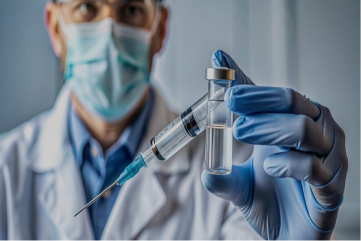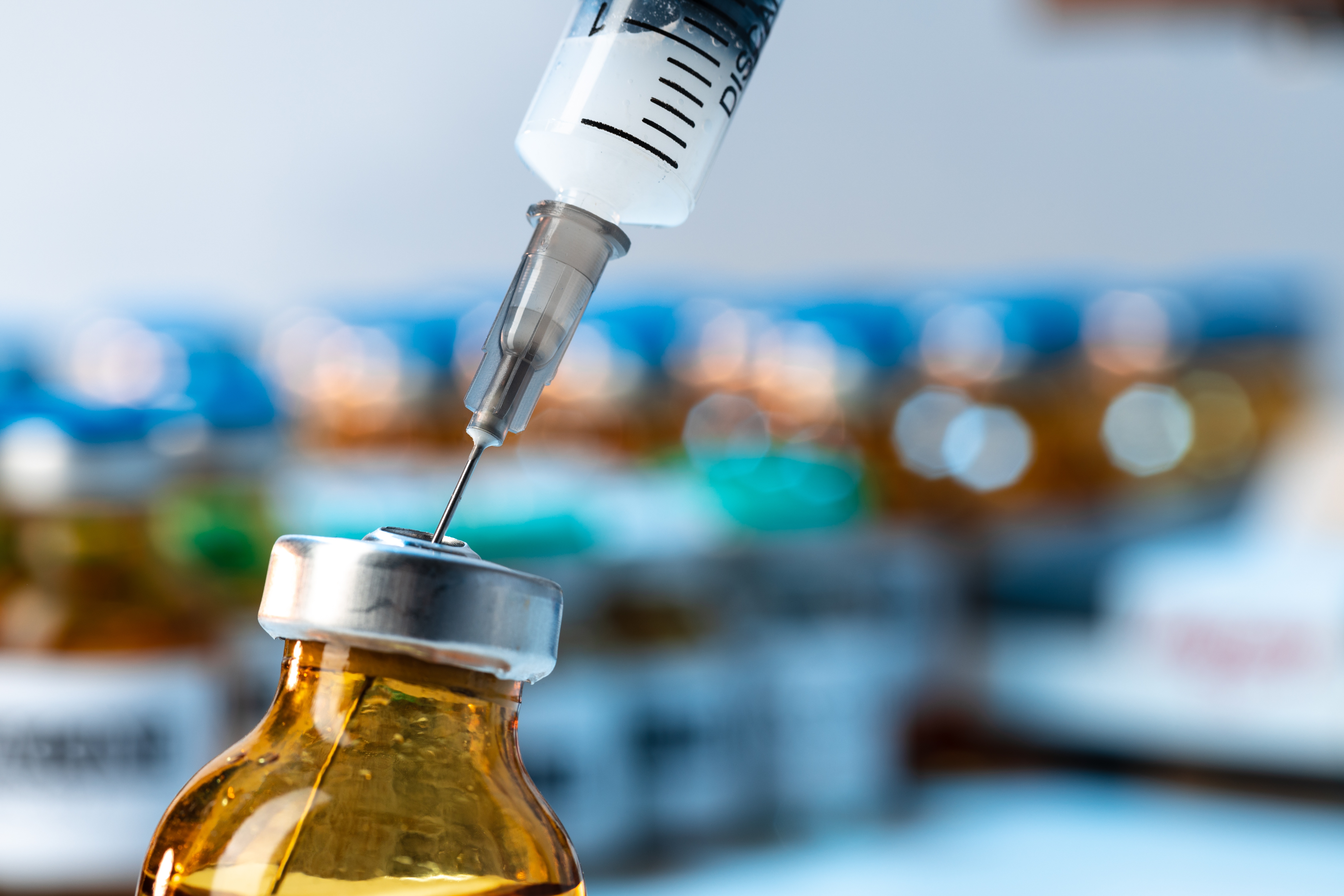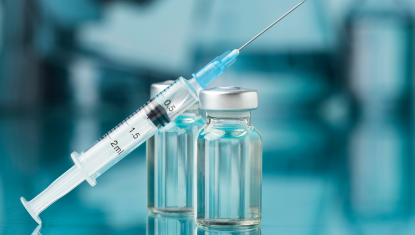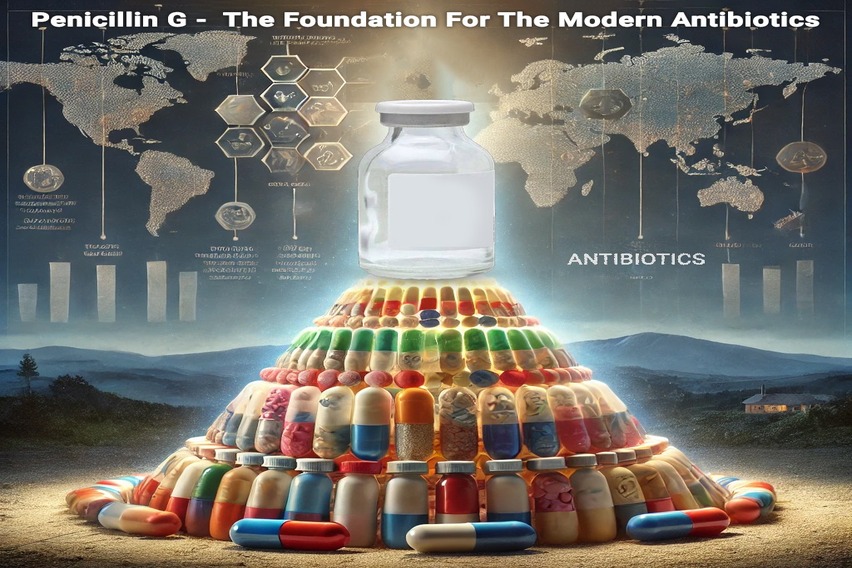What is Penicillin G?

Penicillin G : The Infection Fighter
What is Penicillin G?
Penicillin G is basically Benzyl Penicillin, a Beta- Lactam antibiotic derived from the Mold
Penicillium Notatum. It is an antibacterial medicine to treat bacterial infections. It has a role
as an antibacterial drug, an epitome and a drug allergen. It is effective against a range of
gram-positive bacteria and some gram-negative bacteria, making it a versatile tool in
treating infections.
Uses of Penicillin G:
1. Bacterial Infections
Penicillin is majorly used to treat bacterial infections like Streptococcal infections,
Pneumococcal infections, Syphilis, Endocarditis, Anthrax, Listeria Infections and
Gonorrhoea
2. Preoperative Prophylaxis
Penicillin G is also used in certain surgeries to prevent infection, especially for
high risk patients
3. Rheumatic Fever
Penicillin G is also used to treat rheumatic fever which often develops if strep throat or
scarlet fever isn’t treated properly.
4. Treatment of Infection in Sensitive Populations
Penicillin is also prescribed to children and pregnant women to treat infections.
Penicillin G is administered either intravenously or intramuscularly, depending on the type
and severity of the infection.
Here are a few specific uses of Penicillin:
1. Bacterial Infection
2. Syphilis
3. Streptococcal Infections
4. Pneumonia
5. Meningitis
6. Endocarditis
7. Diphtheria
8. Anthrax
9. Skin and Soft Tissue Infections
10. Actinomycosis
11. Gas Gangrene
12. Listeriosis
How is this medicine injected?
Penicillin G comes as a suspension (liquid) in a prefilled syringe to inject into the large
muscles. Usually there is a single dose prescribed but when used to treat or prevent a serious
injection there are additional doses given at least 7 days apart. If the injection is given too
soon or the doses are missed, the bacteria may become resistant to antibiotics.
Shortage of Penicillin G
The shortage of our Infection Fighter drug or the Essential antibiotic has raised concerns
within the Healthcare sector. Worldwide, there are approximately 6.3 million cases of Syphilis
every year out of which 1 million are the pregnant women. A few factors that are causing
the shortages are:
1. Increasing Demand
Since a few years, there is a significant rise in syphilis and rheumatic fever cases
resulting in the increasing demand of Penicillin G. As this drug is also used incertain surgeries to prevent infections, it is further driving up the demand.
2. Manufacturing Challenges
In spite of running at full capacity, the existing Manufacturing facilities might not
be able to meet the rising global demand. The process of manufacturing Penicillin G
involves a lot of factors like specific temperatures, pH levels, sterile environment and
quality control to ensure purity and efficacy of the drug. A small deviation in the
process can lead to batch failures.
3. Supply Chain disruption
There is a major concern about the quality of the active pharmaceutical ingredient
(API) manufacturing. None of the current API manufacturers of Penicillin G have
market authorization from a global authority such as WHO. There other factors like
geopolitical tensions, natural disasters, logistical issues that can cause disruption in
the supply chain and production of the drug.
4. Economic Factors
The production cost of Penicillin G is high as it is a sterile injectable and requires
specialized equipment and stringent quality control measures. Some countries set a
cap at which Penicillin can be purchased by government, helping to keep the price
low. This low selling price and expensive production cost limits the enthusiasm for
commercial manufacturers to enter or even continue the Penicillin G manufacturing.
There are also factors like inaccurate forecasts of needs, weak procurement systems, and
clinical misconceptions of adverse effects, etc. which all contribute to global shortages
What is the Global effect of the shortage of Penicillin G?
1. Impact on the Patients:
Due to the shortage of the drug, the patients might experience a delay in the
treatment which may lead to increase in the infection. The doctors might use
alternatives to treat the infection which may be less effective, more expensive and
might also have side effects.
2. Antibiotic Resistance:
Overuse or misuse of the antibiotics might lead to the development of antibiotic
resistant bacteria, which may grow the concern of global health.
3. Impact on Public Health:
The shortage may rise the case of untreated infections which may lead to spreading
of diseases like Syphilis and Rheumatic fever. This will cause a major impact on the
global health.
Addressing the Penicillin Shortages
1. Elimination of Congenital Syphilis
Increase Antenatal Care Coverage to 95%
It means that 95% of pregnant women should receive antenatal care, which involves
regular checkups during pregnancy to monitor the health of the mother and the
baby.
Test 95% of Pregnant Women for Syphilis
Syphilis is a sexually transmitted infection that can be passed from mother to baby
during pregnancy and to avoid that we need to ensure that 95% of pregnant women
are tested for syphilis during their antenatal care visits.Adequate treatment for 95% cases with Penicillin
Every pregnant woman diagnosed with syphilis should receive Penicillin as it is a
proper antibiotic treatment
2. Harmonizing Standards
Harmonizing product quality and specification standards among manufacturers is
needed to ease the issue of shortage. A common product specification to be
introduced for all stakeholders to lower costs. WHO is inviting manufacturers and
supporting the prequalification of Penicillin to assure quality.
3. Strengthen Supply Chain Infrastructure
WHO and partners are working with countries to eliminate congenital syphilis by
improving national supply-chain infrastructure. This includes better BPG forecasting
and procurement, and taking steps to prevent future stock-outs and shortages
4. Tools for Healthcare
WHO is developing a range of tools for health-care providers to address
misconceptions about Penicillin G. particularly unfounded fears of increased
adverse events following its use India will start manufacturing Penicillin G in 2024, ending the 30-year hiatus.
This has been possible due to government’s Production Linked Incentive (PLI) Scheme
introduced during Pandemic to boost domestic manufacturing and enhance self-reliance in
the pharmaceutical sector.
Addressing the shortage of Penicillin G is important to maintain public health by effectively
treating the bacterial infections. Collaborative efforts from manufacturers, healthcare
providers, governments, and international organizations will ensure the reliable availability of
this vital antibiotic.



